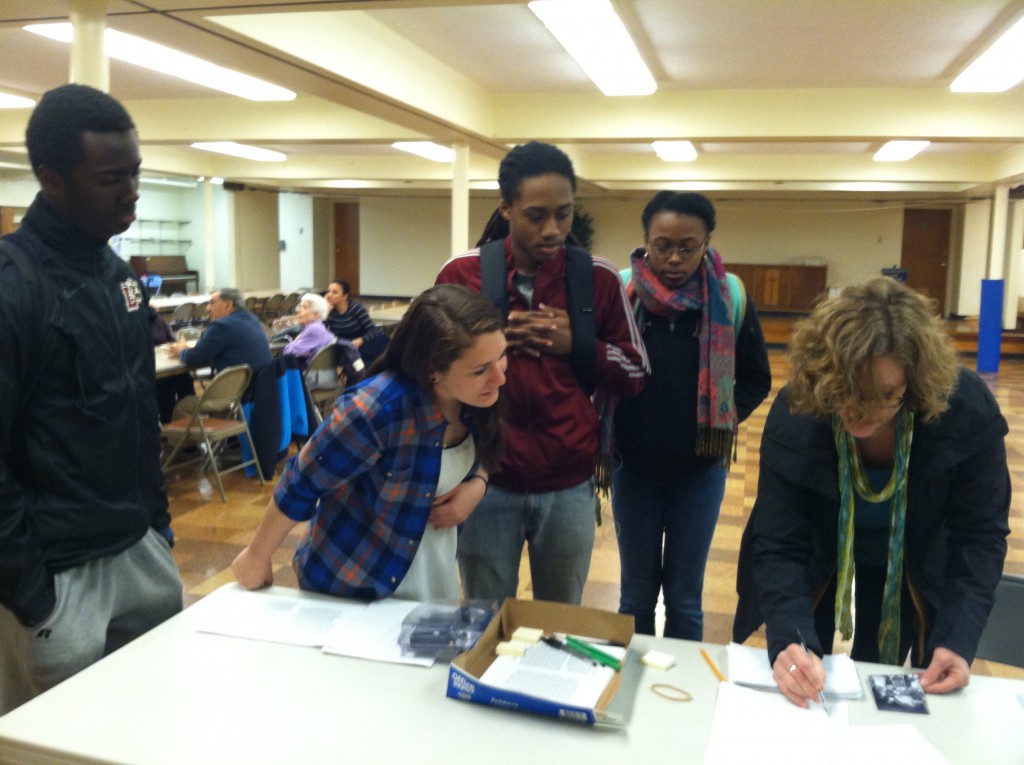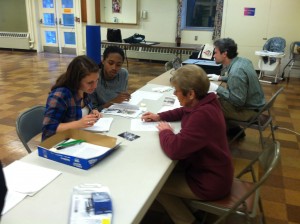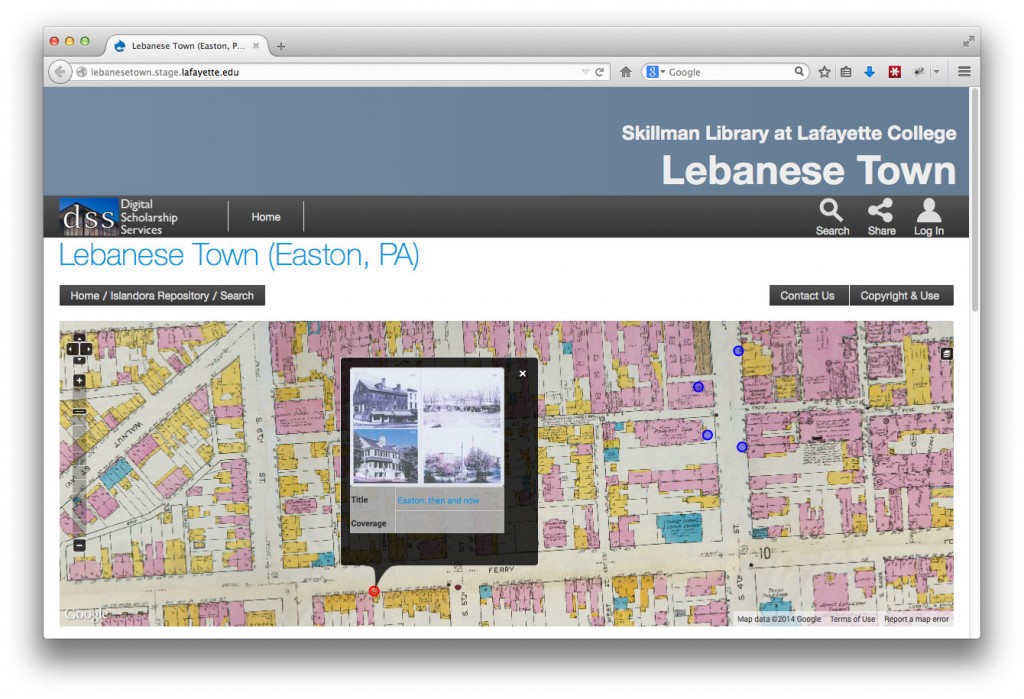Easton residents joined students from Professor Andrea Smith’s Social Memory class to contribute to the ongoing digital public history project “Lebanese Town.” Together with DSS’s Visual Resources Curator Paul Miller, Smith and her students collected and scanned photographs, post cards, and memorabilia from the Easton community. The project aims to reconstruct Easton’s Lebanese neighborhood that was lost to urban renewal in the 1960s. The materials collected today will be added to the growing archive that seeks to preserve the memory of this eclectic, diverse neighborhood.
Professor Smith has been working on this project in her classes since 2008 and with her students she has compiled the stories into a book that the contributors help to edit and add to over time. The project has now grown into a digital project where these stories, images and photographs will be included on an interactive map. To learn more about the larger project see our previous post about our latest digital humanities projects.
This week’s event was the second “scan-a-thon” Professor Smith has held to help collect local materials. Over the years she has amassed a mailing list of residents who once lived in Lebanese Town who now often attend events not only to bring additional materials for the collection but to reminisce about their time together in the neighborhood.
These meetings give the students a unique view into Easton’s past as they get to hear stories of the town as it was decades ago. The contributors tell them how amazing the bread was at Leone’s Bakery, and recount old world remedies like curing whooping cough with kerosene or a headache with potato slices. Moreover, they remember Lebanese Town fondly as a close-knit community of friends and neighbors. As the residents talk, the networks and fibers of the community begin to emerge. With so many stories already collected, this term’s students are able to start pulling these threads together writing chapters that focus on shared experiences that can now be told from multiple perspectives. The latest version of the book will be presented to the contributors at a special event at the Sigal Museum on May 7th.
As this growing archive is made digitally accessible, this local history will reach a new audience of both contemporary Easton residents and the Lafayette community of students. Once launched, users will be able to add their own items to the map creating a rich exhibit for the entire Easton community.
For more information on starting a digital project with DSS or applying for an internship opportunity contact us at digital@lafayette.edu, or call (610) 330-5796.




